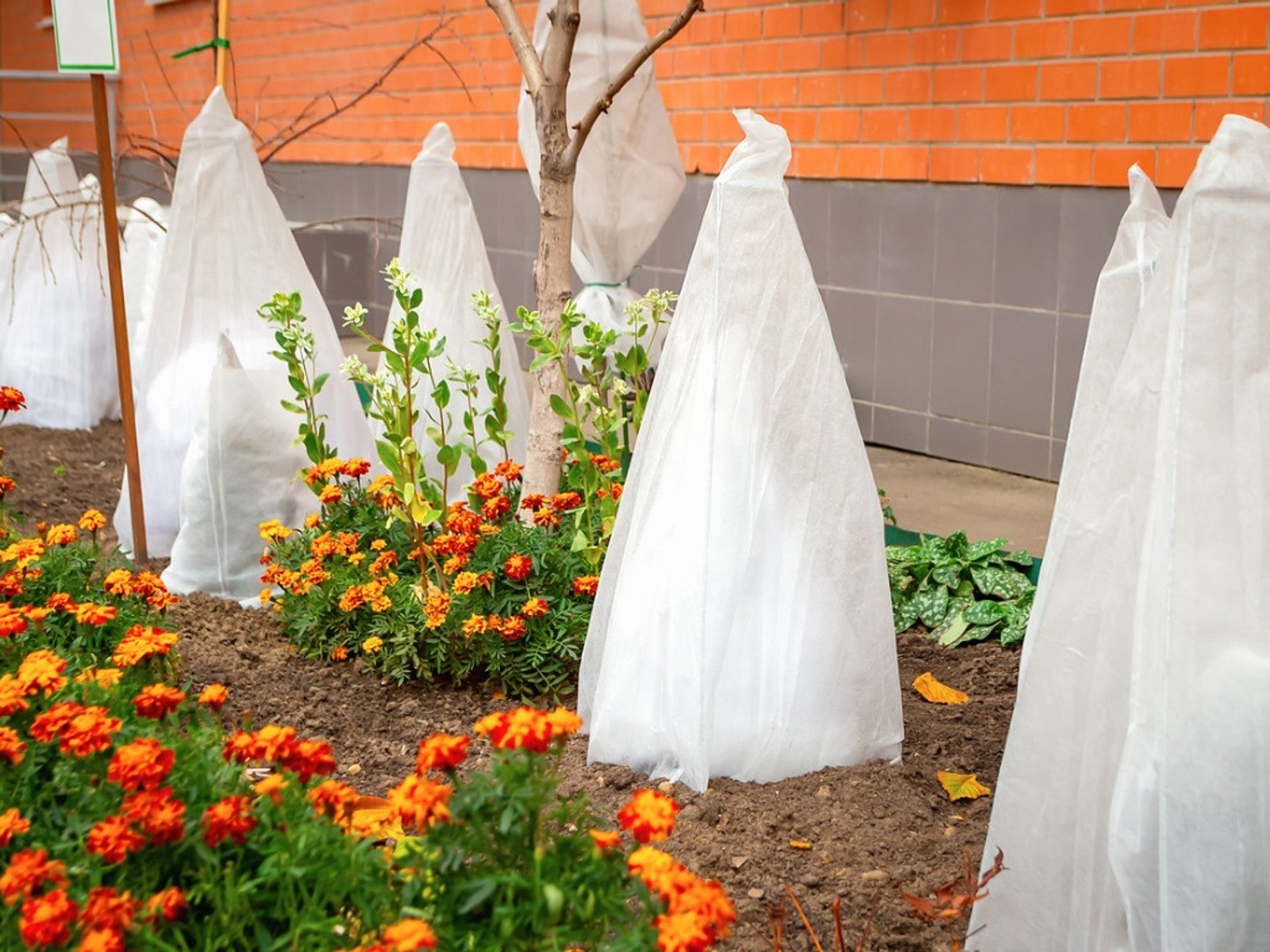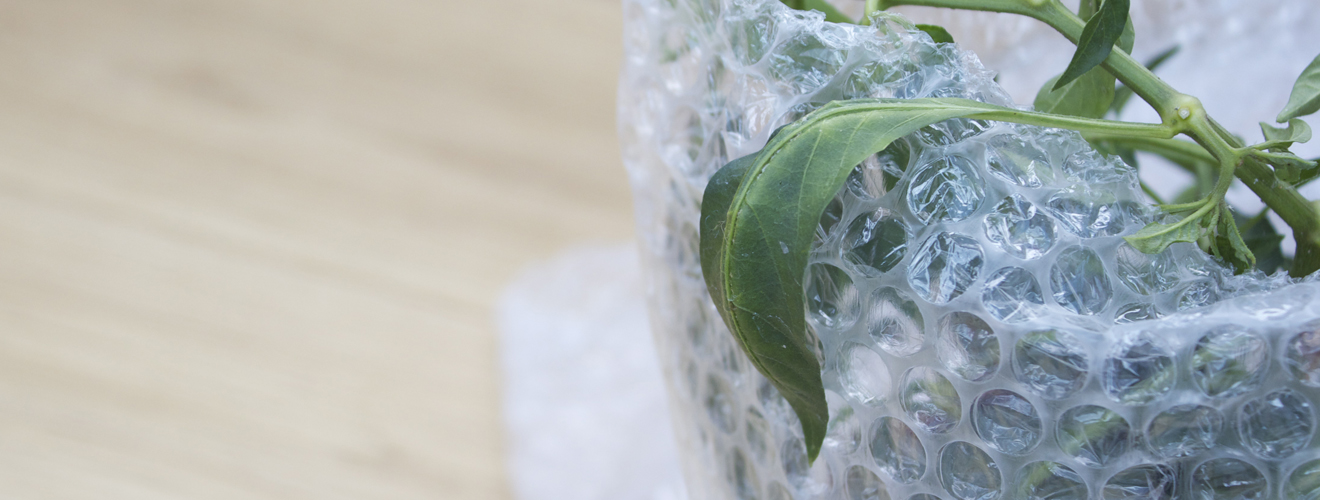When autumn arrives, plants respond to Mother Nature’s messages by losing their leaves and withering, but as winter gives way to spring, the temperature also changes. Here are some suggestions to make the move easier for your plants.
Making sure your plants are not positioned in drafts or on a window sill that loses a lot of heat at night when your heating is off is one of the easiest methods to keep them comfortable and content. In order to reuse household items and save money, you may also utilize insulation materials, greenhouses, heating mats, and other straightforward solutions to ensure that your plants grow.
Learn how to insulate your plants in the next paragraphs, along with details on the things you may buy to keep them warm.
Table of Contents
How do you keep plants warm in winter?
Window sills should be avoided unless your insulation is flawless because they can become very drafty when the heating is turned off.
Think of a protected location for your plants, such as putting indoor pots on top of a fridge, freezer, or even a fish aquarium. When the weather gets chilly, people like to cuddle up to fires or snuggle beneath duvets.
If you have a cat, pay attention to where cats like to nap or sleep because it’s almost always the warmest place in the house! Put all of your pots in a large container for ease of movement so that you may move them as needed to be near a heat source.
8 Ways to Keep Your Plants Warm

Have you ever noticed how warm your refrigerator’s top is all the time? In chilly weather, you can store your pot plant there overnight because it makes an effort to keep food cool. You may simply relocate it back to its original spot once summer arrives.
2. Aluminium foil
Do you have any further ideas for using aluminum foil? It is a reflective material that we use in cooking to save heat. If you wrap it around or place it under plant pots, the sun will warm the pots when it shines, keeping the entire area warmer for longer.
3. Bubble wrap
Do not throw away your next package when it comes in. Remove the bubble wrap packing instead, saving it to coddle your plants.
Both indoor and outdoor plants are protected, so either tightly wrap it around the container or fasten it with loosely tied rope to the plant stem outside. It serves as a barrier of defense against cold drafts, chilly temperatures, and even snow.
4. Glass greenhouses
For this, glass greenhouses are created! This will keep many plants frost-free if you are fortunate enough to have room for one in your garden.
Assuring a tight fit on the door and, in colder months, even bubble-wrapping the interior to keep the weather outside can help this process.
Additionally, using this technique will enable you to harvest winter salads, reproduce plants more quickly, and provide some protection to all plants included within its walls.
5. DIY greenhouses
DIY or plastic greenhouses. If a glass greenhouse is out of your price range, you can still purchase less expensive plastic greenhouses. Another concept is to use an old window to create a frame that can be placed over a cardboard box outside.
This will gain heat if you place it next to a home wall because the occupants need to stay warm! When you start to harden off seedlings in the spring, these are both great ways to keep plants covered at night.
6. Heated mats
Plant growers can purchase heated mats, and in particularly cold weather, set up multiple pots on one of them to ward off the chill!
Additionally, you can purchase coverings for propagators. By using a number of heat mats, you can maintain a variety of seedlings at a comfortable temperature.
7. Heat lamps
The best way to maintain a steady air temperature is with heat lamps. However, if you leave them running continuously, they might end up being pretty pricey. They will undoubtedly offer a sensitive plant some short comfort if it is snowing, and for added assurance, you can combine physical insulation with a heat mat.
8. Stones
How about rocks? You can feel how hot a stone is on a bright day if you touch it, especially dark stones because they absorb a lot of heat.
Use them strategically so that your plant will benefit from them. The amazing thing about them is that they continue to release this heat after nightfall.
How to keep plants warm in spring
Due to inadequate light levels, most plants hibernate or at the very least slow down their growth during the winter. Finding an appropriate warm spot inside your home near a radiator is an excellent alternative for plants as the springtime air temperature rises, especially if you’re trying to get seeds to germinate.
If plants can go outside during the day but require a warm place to rest at night, this is a nice place to put them back.
Plants are at danger if they are exposed to a frosty environment. Tomato plants won’t recover from this, so make sure you progressively harden them off by exposing them to the outdoors for a short time each day for a week.
When there is no chance of frost, bring them inside at night so they can be dug into permanent placements.
When a frost is expected, cloches can also be put on top of plants to protect them.
You can create your own by cutting recycled milk or liquid plastic containers to fit over the plant. You may take away the miniature greenhouse effect the following morning.
How to keep outdoor, potted plants warm in winter

Some gardeners cover any vulnerable tips on their favorite plants with well-rotted leaf mold mulch. Dahlia bulbs take well to this kind of treatment and will reward you the following year with vibrant flowers.
It’s also a good idea to water outside plants less in the winter because the plant will think it’s still winter and likely go into hibernation mode until the weather warms up.
What temperature is too cold for plants?
Plants commonly experience wilting or turning black leaves when temps below freezing.
This is frost damage, and if plants are exposed to temperatures below 32 degrees Fahrenheit for more than a few hours, they will typically suffer harm.
Naturally, some plants adapt to colder temperatures better than others, but for plants with tropical or semi-tropical origins, this would be a death knell.
It is important to keep delicate plants like new seedlings, some herbs, and tomatoes indoors until the threat of frost has gone because they won’t survive.
Surprisingly, plants like cacti and succulents, which are acclimated to the hot desert sun, can also survive in extremely cold, nocturnal conditions.
The germination of seeds requires a warm environment, and your plants, whether they are grown indoors or outside, will benefit from being kept warm.
